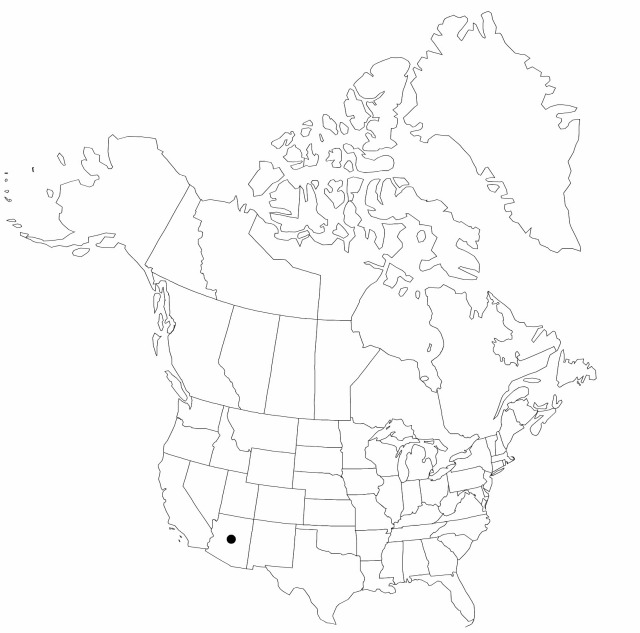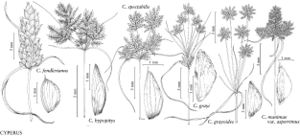Cyperus manimae var. asperrimus
in H. G. A. Engler, Pflanzenr. 101[IV,20]: 463. 1936.
Herbs, perennial, rhizomatous. Culms trigonous, (4–)30–70(–95) cm × 0.5–2.3 mm, densely scabrid or hirtellate, either proximal to apex or over distal 1/2 of culm. Leaves 3–5(–8), flat to V-shaped, 7–30(–45) cm × 1.5–3.5(–6) mm, often becoming involute in drying, usually glabrous, except for scattered prickles on keel, margins in apical 1/3, or both surfaces scabrid throughout. Inflorescences: if rays absent, spikes 1–3(–4), sessile, (occasionally so densely congested, individual spikes not discernible), or if rays present, spikes 2–5(–10), borne singly on rays; spikes densely ovoid to oblong-ovoid, (15–) 20–35(–50) × 10–30(–40) mm; rays 1–6(–16) cm, glabrous or scabrid like culm, often absent; bracts (1–)3–5(–10), ± horizontal to reflexed parallel to culm, 3–12(–36) cm × 0.4–3(–5) mm, margins, keel, often both surfaces scabrid; rachilla deciduous, essentially wingless or wings inconspicuous, clear, 0.1(–0.2) mm wide. Spikelets 25–50(–80), light brown to deep reddish brown, ellipsoid to linear, quadrangular-compressed, 4–12(–22) × 2–3(–4) mm; floral scales deciduous, (2–)3–10(–14), marginally clear, laterally brownish to clear distally, or light brown, reddish brown or deep red throughout, medially green, often also reddish striate, laterally 3(–4)-ribbed, medially 1–3-ribbed, oblong-elliptic to broadly lanceolate, (1.5–)1.8–2.4(–2.7) × (1.2–)1.4–2(–2.5) mm, apex blunt to mucronulate, often erose, mucro 0.1(–0.3) mm, medially glabrous or rarely scabridulous. Flowers: anthers 0.4–0.6 mm; styles (0.2–)0.4–0.8 mm; stigmas 0.7–1.1 mm. Achenes brown to reddish brown, stipitate, oblong-ellipsoid, 1.3–1.8(–2.2) × (0.6–)0.7–0.9(–1.1) mm, stipe 0.1–0.2 mm, apex obtuse, scarcely to distinctly apiculate, surfaces finely to distinctly papillose.
Phenology: Fruiting summer–early fall.
Habitat: Openings in pine or pine-oak forests, pastures, seepage slopes, and as weeds in croplands
Elevation: 1000–2000 m
Distribution

Ariz., Mexico, Central America (to Volcán Chiriquí, Panama), South America (Colombia to n Argentina).
Discussion
In addition to Cyperus manimae var. asperrimus, G. C. Tucker (1994) recognized var. manimae and var. divergens from northern Mexico, which might be found in Arizona, New Mexico, or west Texas. All three varieties occur nearly throughout the range of the species; intermediates are scarce, and assigning specimens to a particular variety is seldom difficult. Cyperus manimae var. manimae differs from var. asperrimus in having glabrous culms and bracts, and var. divergens differs in having cuspidate floral scales.
Selected References
None.
